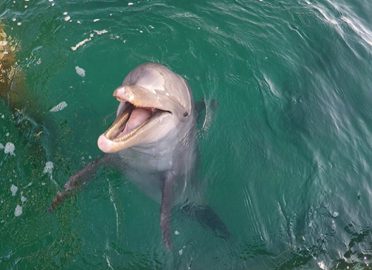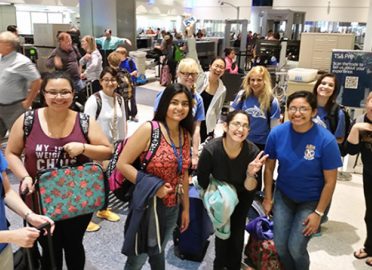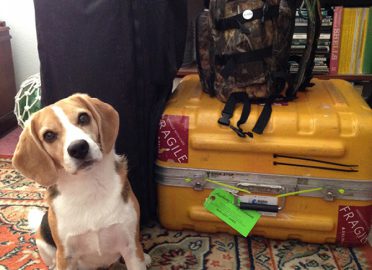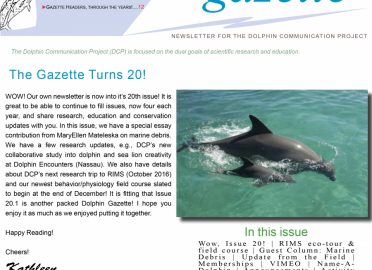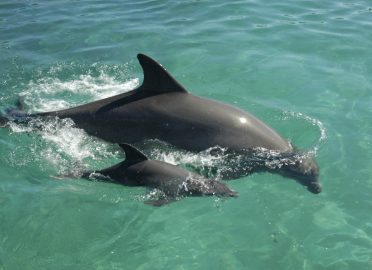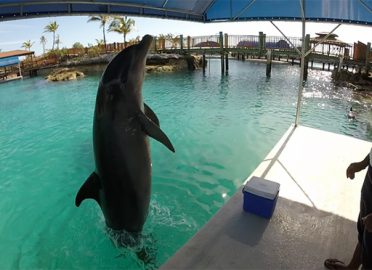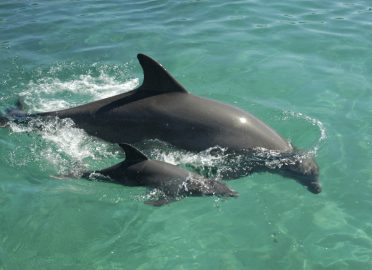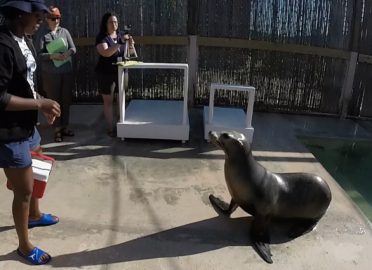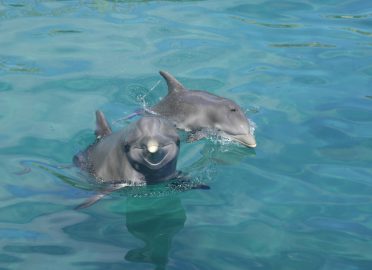New Experiences – it just gets better!
Early AM (6:30 AM) adventures brought 7 of us (Sara, Toni, Emily, Paloma, Tori, Brianna & Dr. Hill) along with Kathleen to see the dolphins at Bailey’s Key for the first time. So many dolphins, so close, so curious.
We’re Here! We survived the Airports!
It was a long bumpy day but rather easy travel to get from Houston to Roatan. To all of our families … we are all in one piece!
It is beautiful, green, hot, humid, so many trees! The water is so blue and warm. We saw a purple sea star and a sea fan.
RIMS 2016 – field session/course with St. Mary’s U.
Dixie, the mini Seabeagle, wanted to pack her toys and treats into my bags for my upcoming trip to Roatan. Alas, she'll stay home with John and enjoy her walks and treats here. Though not afraid of the water, Dixie prefers to keep her paws dry. She's observant but studying the dolphins next week would mean getting wet!
Students and professors from St. Mary's University in Texas will be joining me and DCP on Roatan from Saturday to Saturday to collect behavior and audio data on the dolphins at the Roatan Institute for Marine Sciences (RIMS).
The Gazette Turns 20!
In this issue, take a look back over the last 20 years and a glimpse forward at our upcoming programs to RIMS.
Innovative Summary!!
Today was a day for wrapping up cameras, reviewing data sheets and videos to confirm all is copied to a second hard drive and packing for the return trip home. Allison left this morning and Dawn and I depart tomorrow.
Last Day of Data Collection!
Thursday was our last day of data collection for our Innovative/Creativity study of the dolphins and sea lions at DE. It was another successful day of data collection! Here, you can see Stormy with O'Kelle during a morning session!
We had 12 sessions with the dolphins to bring all our numbers up to four trial sessions for all the females and three to four sessions each for the males.
Sunshine!! and LOTS of data!!
Today was a wonderfully sunny and warm day! A welcome change from yesterday. And, we collected LOTS of data: we had 36 sessions for data collection with the dolphins and sea lions. We now have 3 repeat sessions with almost every animal who knows the cue for innovate/create. It is really exciting to see the individual differences now become apparent! For example, neither Aunty V nor Stormy are "morning dolphins." They are much better creatively in the afternoons!
We also coordinated with the trainers for completion of dolphin personality scale surveys.
Sea Lions, too!
Yes, it's true! We are collecting data on how creative and innovative the sea lions at DE are also! That is, we are not only looking at the dolphins.
Rainy Days and Mondays …
If I remember the song correctly, rainy days and Mondays get the singer down ... That was not the case at DE with innovative data collection today! Yes, it was rainy, with a bit of lightning and thunder thrown in for good measure. But, the dolphins did not let rain get in their way and neither did the trainers nor us researchers! And, after a few minutes, we were just as wet as the dolphins!
Here, you see Zoe and Javon finishing a research session with innovative behaviors.
Sunday – Day 1 for Data Collection!
Thank you DE!! Allison and I were able to observe and record 19 innovate sessions with the dolphins and 4 with the sea lions! We witnessed a variety of behaviors from leaps, spirals, spits, vocalizations and more! We were able to record three moms with their calves "in tow" watching and (we think) learning! Two of the younger male dolphins presented new behaviors they'd been learning ... practicing their new skill(s), it seemed!
Our tally in video data for the day was ~18 GB of video with a GoPro and 47 minutes of videotape on our second camera.

